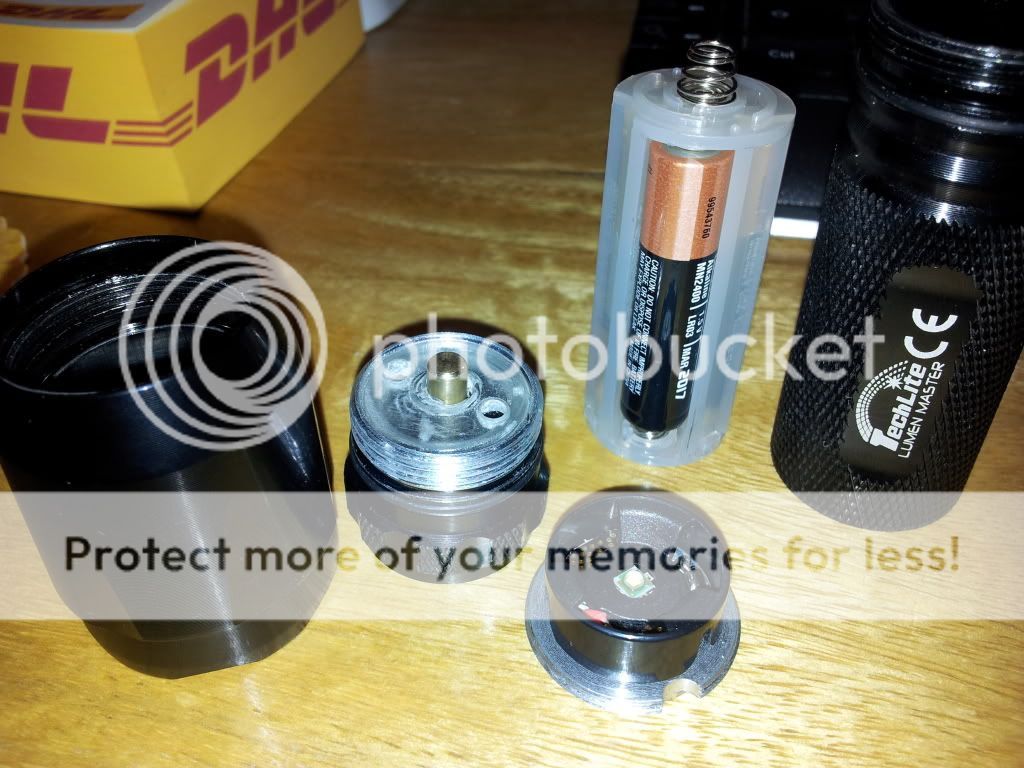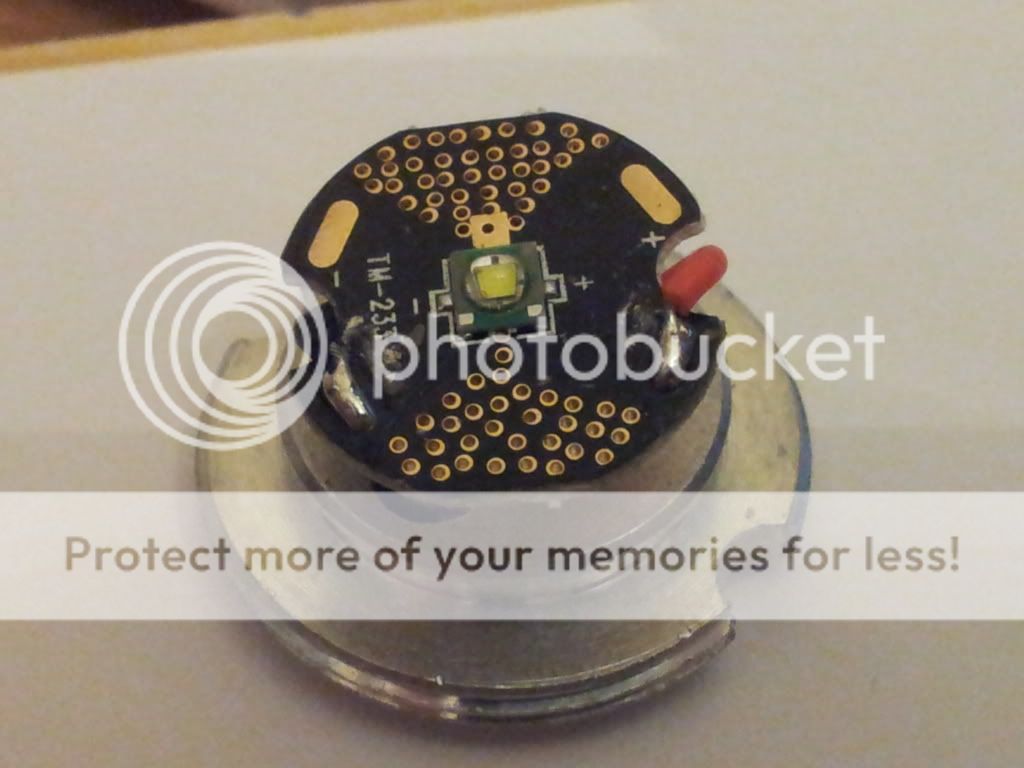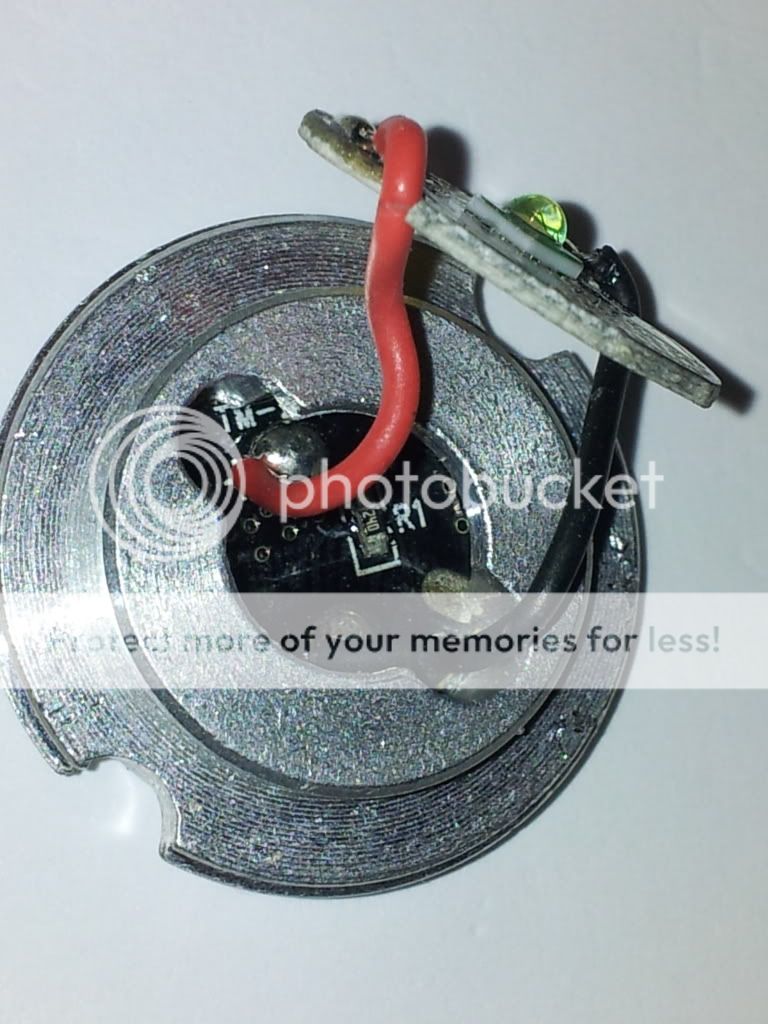Cooper_GTI
Newly Enlightened
- Joined
- Apr 12, 2011
- Messages
- 50
Right, i'm new to all this and don't really have much knowledge on this subject, but here goes...
I've got a costco Techlite Lumen Master. I'm really impressed with the quality and it's pretty bright (150 lumens claimed).
However, i'd like MORE and being an engineer i want to do this myself!!
...this is where it gets interesting!
I've already 'upgraded' the switch to a simple on/off clicky type, but now i want it to give a longer throw!
Questions:
1) Will installing a 22600 battery alone make the cree XPG brighter due to higher ah?
2) Will the LED cope with the higher ah of the new battery?
3) Which LED (inc board) would be a straight swap for the XPG and give a higher ouput?
4) What is 'direct drive' and how can this be done, as i understand this gives the LED more power?
Go easy on me, as it's a big learning curve, but i'm keen to learn!



I've got a costco Techlite Lumen Master. I'm really impressed with the quality and it's pretty bright (150 lumens claimed).
However, i'd like MORE and being an engineer i want to do this myself!!
...this is where it gets interesting!
I've already 'upgraded' the switch to a simple on/off clicky type, but now i want it to give a longer throw!
Questions:
1) Will installing a 22600 battery alone make the cree XPG brighter due to higher ah?
2) Will the LED cope with the higher ah of the new battery?
3) Which LED (inc board) would be a straight swap for the XPG and give a higher ouput?
4) What is 'direct drive' and how can this be done, as i understand this gives the LED more power?
Go easy on me, as it's a big learning curve, but i'm keen to learn!




